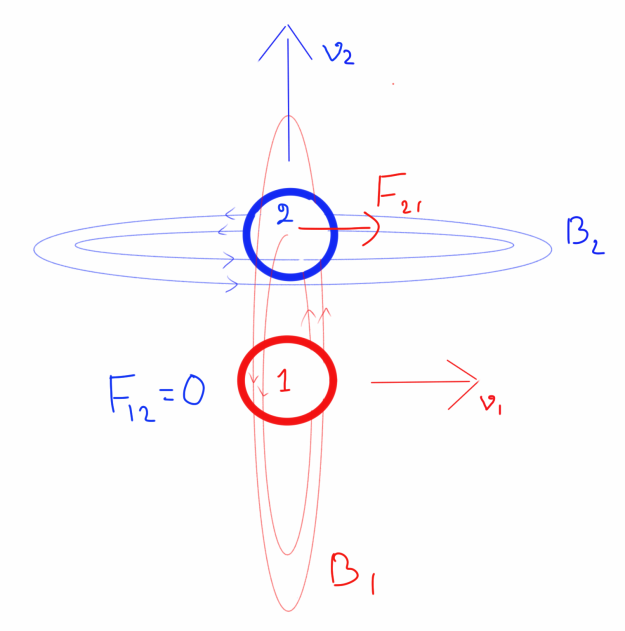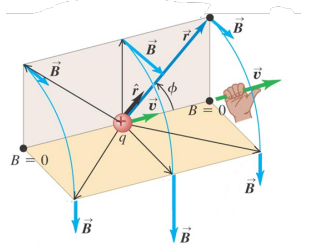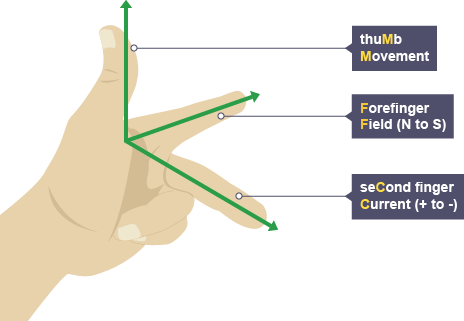In the last post, I talked about some of the basics of Newton’s three laws of motion.
Reiterating them.
1. The first law is about a body’s reluctance to change its state of motion – If it’s not acted upon by an external force, a body undergoing uniform motion will moving, and a body at rest will remain at rest.
2. The second law is about how a body reacts to a force – The rate of change of momentum of a body is proportional to the force acting on it.
3. The third law states that for every action, there is an equal and opposite reaction.
Here’s an instance, however, where the third law does not apply.
For this bit, you’ll need a little bit of background in electromagnetism.
A moving charge creates a magnetic field around it. The direction of the field is given by the right hand rule. If the thumb of your right hand points along the velocity of a positive charge, your fingers curl along the direction of the field.
A charge moving in a magnetic field experiences a force that is proportional to the charge of the particle, its velocity, and the magnetic field.
F = qv x B.
The direction of the force experienced by the particle can be given by Fleming’s Left Hand Rule, depicted below. If your forefinger points along the direction of the field a positively charged particle is moving through, and your middle finger in the direction of motion , your thumb points along the direction of the force experienced by the charged particle.
Now look at this figure where two positive charges are moving in directions perpendicular to each other.

The red charged particle (Particle 1) is producing a field B1. The blue particle (Particle 2) is moving through the field upwards. As it does so, it experiences F21, which pushes it to the right side, as shown by the red arrow.
According to Newton’s third law, Particle 1 should also feel a magnetic force F12 to the left, created by Particle 2. However, since the field produced by Particle 2 (B2) is zero at point 1, Particle 1 feels no force acting on it when it is directly underneath Particle 2.
So, F12 = 0.
Newton’s Third Law does not apply.
If you want to dig deeper and understand why momentum is still being conserved in this scenario, you can mull over reference 3. It’s explored there in great detail.
[Note: I am omitting the Coulomb forces the particles are exerting on each other. They are equal and opposite. It’s the magnetic forces that aren’t obeying Newton’s Third Law.]
References:
- Fig1:https://www.physics.rutgers.edu/ugrad/227/L15%20Magnetic%20Field%20of%20Currents%20Biot-Savart.pdf
- Fig2: http://www.bbc.co.uk/schools/gcsebitesize/science/triple_aqa/keeping_things_moving/the_motor_effect/revision/3/
- http://physics.stackexchange.com/questions/138095/newtons-third-law-exceptions


